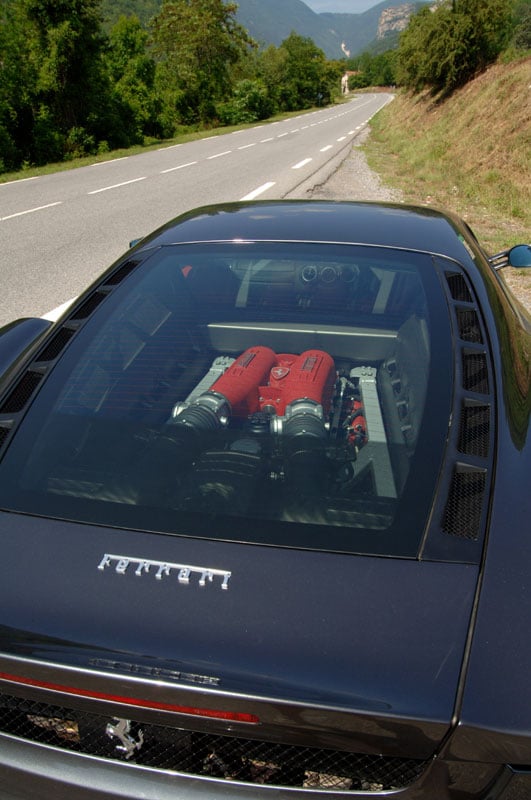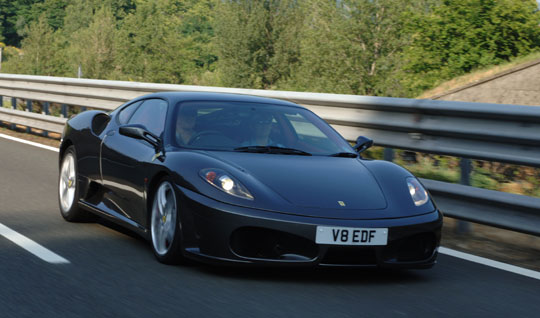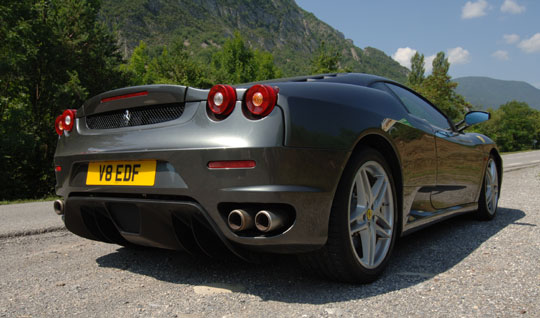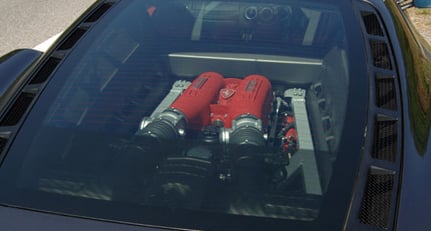 In 1814 it may have taken ‘Old Boney’ a little longer than we did a week or so ago to cover the sinuous roads of the Alpes Maritimes from Nice to Grenoble - but then he didn’t have 490 bhp of mid-engined Ferrari at his disposal.
In 1814 it may have taken ‘Old Boney’ a little longer than we did a week or so ago to cover the sinuous roads of the Alpes Maritimes from Nice to Grenoble - but then he didn’t have 490 bhp of mid-engined Ferrari at his disposal.
The Route Napoleon - so named after Buonaparte’s journey from exile on Elba, a course especially planned to avoid royalist towns in southern France - is one of the world’s greatest driving roads. Relatively open stretches can be despatched at high speed, while sooner or later a corner will arrive that may open up, may tighten up, or may hide a truck or caravanner. It requires a careful right foot and quick steering input, and getting it spot-on is one of life’s greatest pleasures. Getting it absolutely right in an F430 would be the work of a full-time race or rally driver, but take it from me - if there’s a better car out there to tackle it in than the newest mid-engined Ferrari, I’d like to drive it.
Despite its generic similarity with the outgoing 360 Modena, the F430 has so many new features it really is a completely fresh car. Power (490 bhp @ 8,500 rpm) is up by 23% in a 4,300 cc 90° V8 engine that weighs just 4 kgs more than the 360’s. Like the 612 Scaglietti, much use is made of aluminium in the chassis, giving light weight together with strength and safety. A first for Ferrari road cars is the E-Diff, or electronic differential, previously used only in F1. Running off a high-pressure hydraulic system, the E-Diff compares a wealth of electronic data to ensure just the right level of torque is supplied to each driving wheel. Our car has the F1 gearbox, with changes now down to 150 milliseconds, while Launch Control can be activated to produce the most blistering take-off from standstill. And the whole engine/gearbox/diff thing is managed via the CST stability and traction control, together with adaptive suspension, and the new Manettino on the steering wheel.

So it packs a bevy of features that only Michael Schumacher could get the best out of, right?
Au contraire. As l’Empereur himself would no doubt have said. The Manettino controls may seem a racing affectation but their purpose is totally genuine. Drive off normally (if that is possible in a £120,000+ car in the South of France) using the F1 change in manual, and when you feel you have played yourself in, turn the red switch to ‘Sport’ and you can immediately feel the active damping tautening up the chassis, the engine giving just a bit more before the CST comes in, and the gearchanges become faster still. Do not be fooled by the delicious wailing bark over about 3,500 rpm - the engine is not only extraordinarily powerful, producing as it does more than 100 bhp/litre, but has 80% of its maximum torque available at this engine speed. The result is tremendous performance that can be handled by most experienced drivers from 4 - 7,000 rpm with the promise of another 50 bhp to come from 7,000 to the redline at 8,500.
Step near to that redline and you have got to watch what you're doing. Make no mistake, the car will handle situations the average driver would think disastrous but 490 bhp and 8,500 rpm is a lot on a twisting public road... For those using the car on the track there is the ‘Race’ setting, and for those who really want to experience life to the full there’s the disabling of CST altogether. I don’t think you’d select this more than once, and if Ferrari UK’s test driver Enrico Bertaggia uses all the car’s clever electronics, that’s good enough for me.

The F430 is so composed that after a while you just know, in a corner with a visible apex and exit point, you can just throw it onto its outside front wheel foot-down, and the rest of the car will follow. The E-Diff can really be felt doing its job. The F1 ‘box puts another £6,000 on the price of the car but I would specify it any day, as I would the Carbo-Ceramic Brake System that our car came with. I’m sure the regular items are awesomely effective, but there’s an awful lot of braking on these roads, and you’re going to want the maximum. And while we’re speccing up a car, I’d have it in Rosso Scuderia (the test car was in Grigio Silverstone, as was the Superamerica) with plain black leather interior and the standard regular aluminium trim. Go on, I’ll have the Scuderia Ferrari Shields too...and that really is it!
So that’s the Route Napoleon despatched in a couple of hugely enjoyable hours. You could turn round and do it again, or drive on as we did, to Northern France, Calais and Dover. The extraordinary thing is, on regular roads, in towns and on the Autoroute, the F430’s a roomy car with that fabulous engine noise holding your attention but never grating. OK, space for luggage will never match the 612 Scaglietti's, but you can do a very big journey two-up without a problem.
Unlike Buonaparte we never reached the Tuileries in Paris, and never ventured to Waterloo. Like driving the F430, you have to know when to stop.

The Ferrari F430 F1 is priced at £124,650.00 in the UK. The car tested featured options that include the Carbo-Ceramic Brake System (£9,990.00) and Scuderia Shields (£800.00).
Text - Steve Wakefield
Photos - Ferrari UK ALL STRICTLY COPYRIGHT
The other cars featured in our recent road tests of contemporary Ferraris are the 612 Scaglietti, and Superamerica F1 GTC.
With special thanks to Hotel Port Palace in Monaco, Chateau Tilques at St Omer and Hoverspeed, Jason Harris of Ferrari UK and Dave Marriott.
ClassicInside - The Classic Driver Newsletter
Free Subscription!



